Enterprise App Development | In-Depth Guide
Enterprise app development is a huge topic. It’s no secret that large organizations are dealing with unprecedented demand for custom applications. However, it’s hard to generalize when you recognize the sheer scope and variety of the kinds of tools that are needed.
Think about it. A custom GUI for your IT team and a mobile app for your customer loyalty scheme don’t have that much in common.
Not on the face of it anyway.
These tools are vastly different in terms of their users, architecture, design, and just about every other aspect of their development. Still, there are several important aspects of building them for an enterprise context that we need to consider.
Today, we’re diving deep into everything you need to know about enterprise app development.
We’ll start with the theory around how enterprise builds differ from their SME counterparts. Then, we’ll move on to the practical implications of this, including the specific tools, techniques, and steps you can use to build enterprise apps effectively.
Then, we’ll wrap up by looking into how Budibase is changing the game.
First, though, let’s start with the basics.
What is enterprise app development?
Let’s get our terms in order first. Unsurprisingly, enterprise app development is the process by which enterprises build apps - or have apps built for them by external vendors or contractors.
As you might expect, this can mean an enormous range of things in practice.
Specifically, we can point to obvious distinctions between different projects across their scale, scope, and security requirements.
But, the important thing, for now, is to think about what enterprise app development projects have in common.
So, let’s think about some of the specific contextual challenges that characterize enterprise projects.
First, there’s the fact that enterprise IT teams are highly constrained by internal rules and procedures. Whether this is financial and legal controls, compliance workflows, or approved technologies, enterprise developers must deal with a considerable amount of red tape.
Second, we need to factor in the heightened security risks encountered by enterprises - by virtue of both their size and the specifics of their data assets.
Third, there’s the scale and complexity of user bases for enterprise apps. For internal tools and customer-facing apps alike, we can generally expect that all else being equal, enterprise apps are going to have a lot more users, often with more widely differing needs.
Fourth, enterprise IT teams are under an immense amount of pressure. There’s an ever-greater demand for digitalization, across all business verticals. Even the largest organizations in the world don’t have infinite resources to meet this challenge.
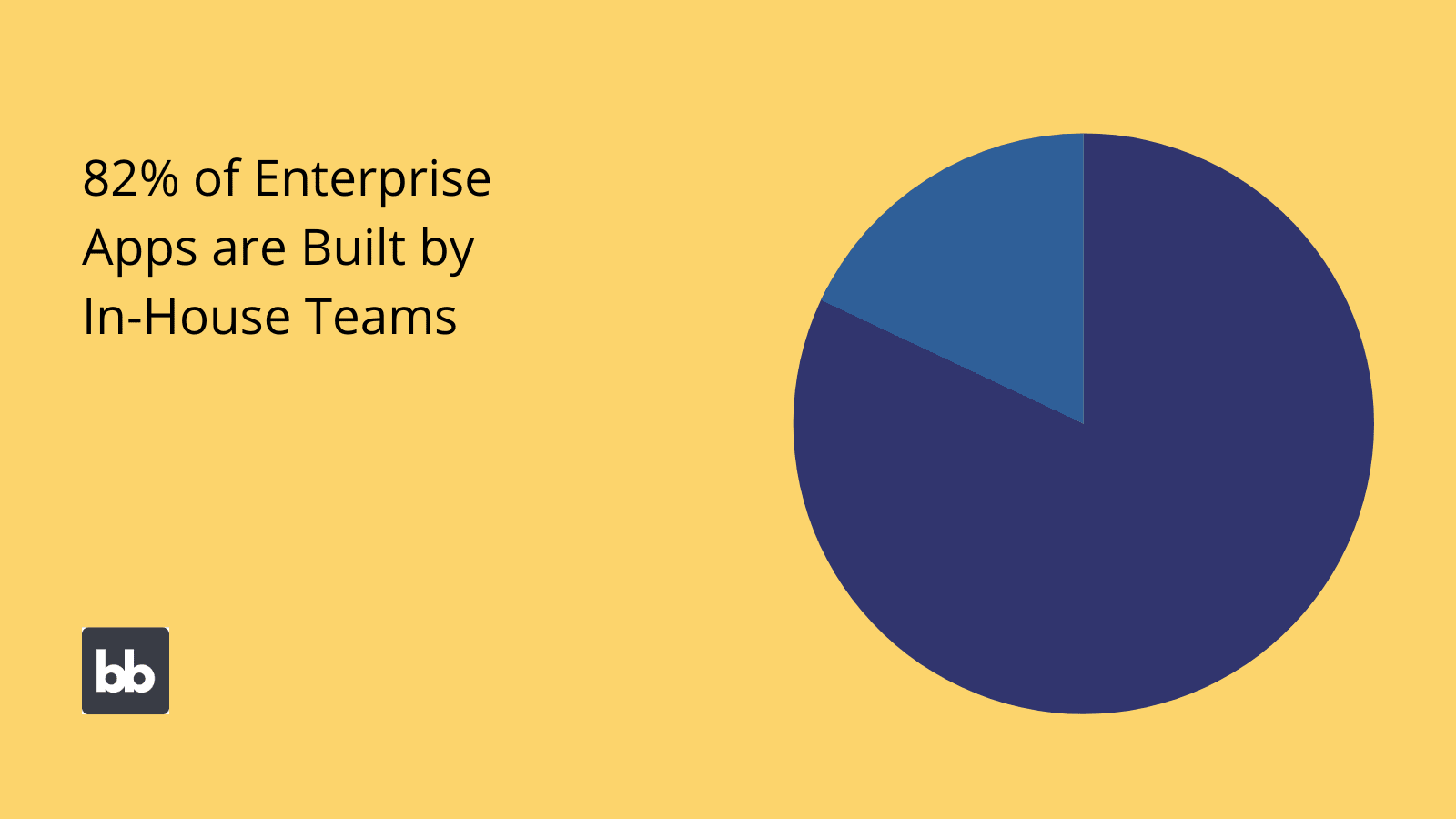
(McAfee )
How does this differ from SMEs?
So are enterprise app development challenges unique, or do large organizations face the same challenges as smaller ones, just on a bigger scale?
A little from column A, a little from column B.
To flesh out our understanding, let’s take a look at some of the concrete ways that the typical enterprise solution will differ from a typical SME solution.
User management
For a given class of apps, we can safely assume that enterprises will normally need to manage more users than SMEs.
This is compounded by the fact that we can also expect more diversity across these end users, in terms of their needs, technical skills, and responsibilities.
So, the basic challenge is ensuring that each individual user has the exact right level of data exposure and access for their needs, without overburdening IT teams with administrative work.
Therefore, there’s a huge impetus for creating effective access control policies and systems. Check out our guide on how to implement RBAC for more information.
Security and compliance
Probably the most obvious area where SME and enterprise app development projects differ is ensuring security and compliance. Large organizations face a difficult combination of heightened cyber threats and more complex regulatory environments.
Negotiating this reality puts a large strain on internal development teams.
At the same time, we can attribute a number of design and development conventions to this. For example, we might see clearly defined internal policies relating to the use of different tools, frameworks, or hosting methods.
Similarly, enterprise app development projects will also reflect heightened security needs at a process level. For instance, additional review and monitoring processes or more emphasis on the separation of concerns within projects.
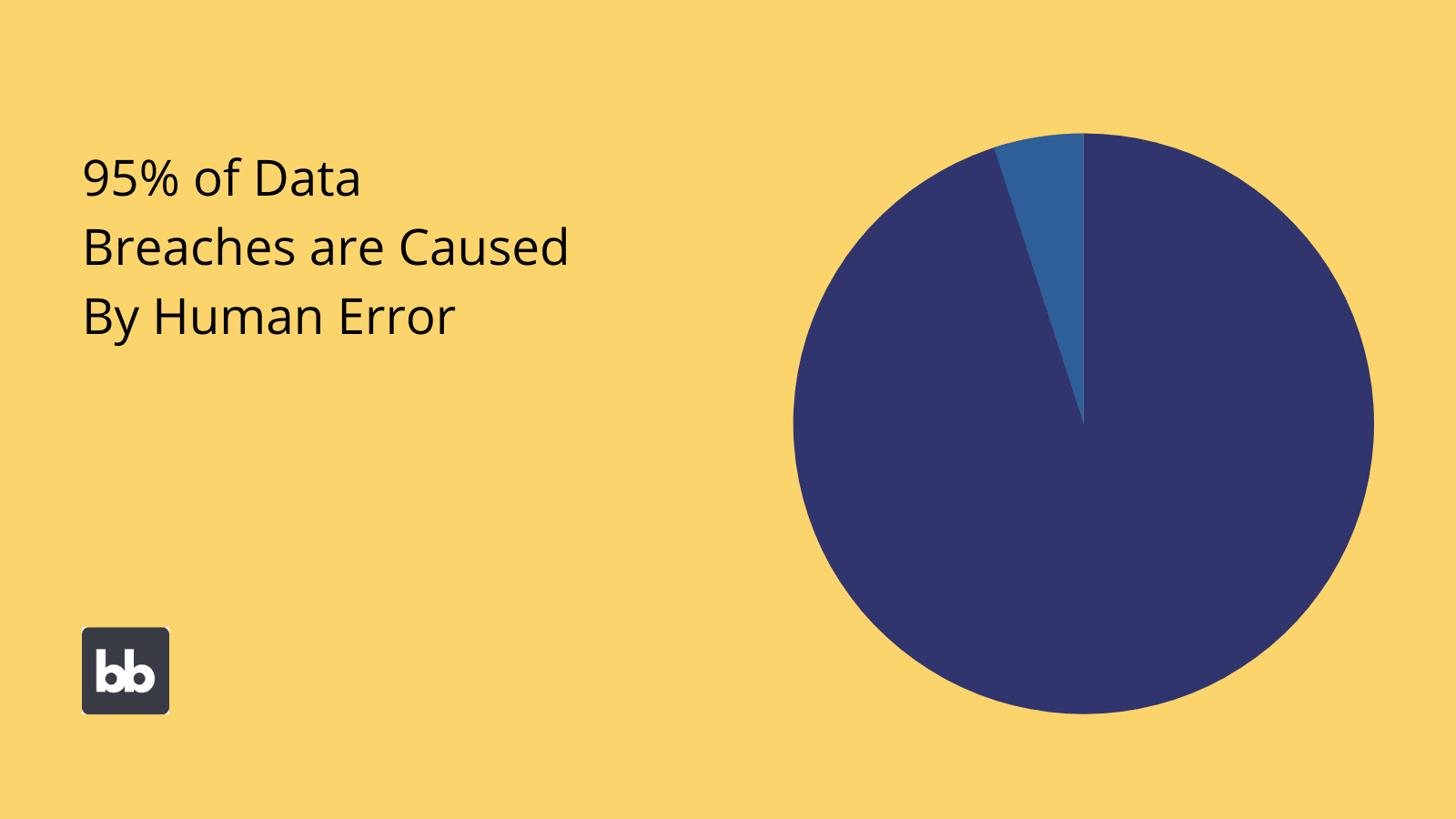
(Comptia)
Hosting, deployment, and configuration
In most cases, enterprises prefer to deploy solutions to their own infrastructure.
Of course, this largely relates to the issues we’ve seen already. Even in our current age of cloud computing and remote work, there’s a strong impetus for enterprises to control their own hosting.
This feeds into security, access control, reliability, and performance alike.
Of course, we need to balance these issues with an increasing need for remote access, from a variety of different devices. So, this might mean containerized private cloud solutions.
Or, in many cases, there’s a need for local hosting, in order to implement physical conditions on access.
No matter the specific configuration, the key thing is maintaining the highest level of control over where and how tools are hosted.
Integration and workflow management
The larger the organization, the more important it is to maximize efficiency. For technical teams, one key aspect of this is achieving integrability across software stacks.
Enterprise workflows are often characterized by large numbers of discrete tools. So, if we want to create efficient workflows, we need integrations to facilitate cross-platform automation.
The challenge here is less with newly built applications than with legacy tools and data sets.
Check out our guide to enterprise workflow automation to find out more.
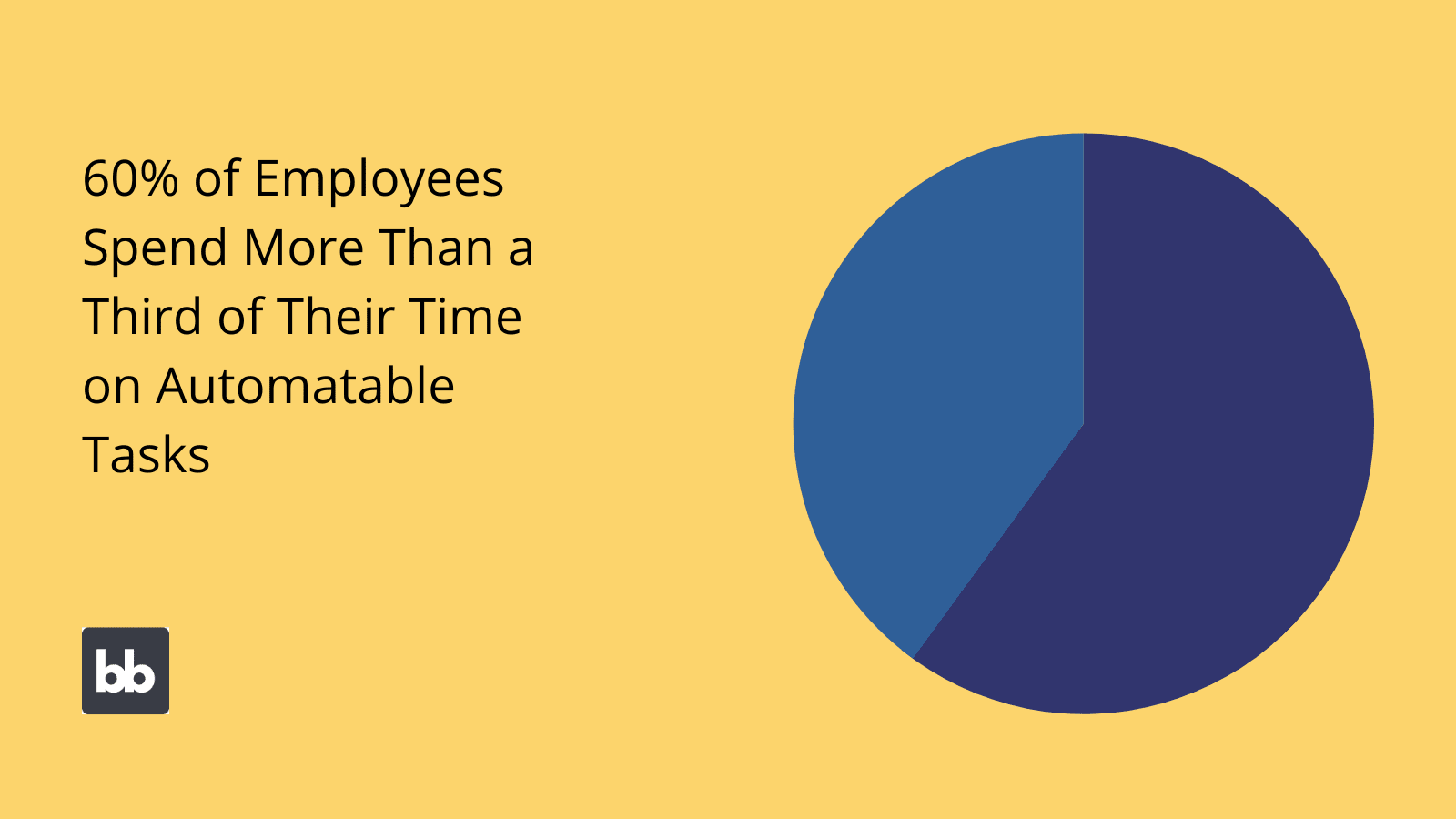
(McKinsey )
Monitoring and transparency
Then we have the issue of ensuring that enterprise app developments are working properly and being used as intended. This requires technical teams to implement extensive monitoring, of both usage and technical performance.
For instance, we might encounter a need for bespoke dashboards for various key metrics, resources, and system events.
This is vital for a range of activities, including incident responses, capacity planning, and oversight within workflows.
Alternatively, we may need to use similar strategies to monitor our progress in terms of the business-level problems that individual apps are intended to solve.
What kinds of apps do enterprises build?
As we hinted at earlier, there’s a huge degree of variation across enterprise app development projects, with specific regard to use cases. We’ll explore this issue in more detail a little bit later.
First, though, it’s worth getting acquainted with the broader categories of tools we need to know. We can largely think about the format and architecture of different kinds of applications.
Here’s what you need to know.
Desktop apps
Desktop apps, as you no doubt know, are applications where at least some elements are stored locally on individual users’ machines. Frankly, these kinds of apps have faced a decline over the past decade.
And for a number of reasons.
For one thing, desktop apps are comparatively expensive. These costs increase the wider your rollout is. We need to ensure they work on different OSs, physically install them on users’ machines, and manually manage patches.
So we have increased development and admin costs.
Still, there are plenty of situations where desktop apps might be needed. For example, to address specific security concerns or provide off-line capabilities. We’ll see some other options for this latter point a little bit later.
Utilities
Utilities are more technical tools used by developers and wider IT teams. We can also think of these as back-end tools, where the focus is less on facilitating user actions as it is on systems management tasks.
For example, database GUIs might be used by the development team to test queries during app builds.
Or, they might build a dedicated utility for monitoring tasks, like tracking automation runs or user actions.
Most utilities will have a relatively small user base. They might only be used by a handful of IT colleagues, with their primary purpose being to carry out back-end actions.
Web apps
More and more enterprise app development projects are focused on building web applications. These are tools that users access remotely, via their web browser. This makes it easy to create tools that are accessible from just about any device.
There are a number of obvious benefits here compared to desktop apps. One is that there’s typically a greatly reduced cost for building and managing web apps.
For example, with a web app, you don’t need to worry about building compatibility for different OSs or rolling out new versions and patches to individual machines.
Check out our guide to web application development for more information.
Mobile apps
Of course, when many people say apps, they really mean mobile apps. These play a role in enterprise environments, but they don’t typically account for a huge proportion of the development backlog.
As with desktop applications, a mobile app build can create excessive costs, when there are easier ways to achieve the same results. For instance, if you need to create specific native tools for different operating systems, you’re creating duplicate work for your team.
This is compounded if you still need a desktop version too.
Nonetheless, there are specific scenarios where native mobile apps can be helpful. One is customer-facing contexts, especially where we’re trying to foster a sense of loyalty with perks and other retention strategies.
Another is in cases where field agents need specific offline capabilities or access to native functionality on their device itself.
However, in both cases, there’s increasingly a question mark over whether native mobile apps are the most cost-effective option here.
Progressive web apps (PWAs)
Progressive web apps are an increasingly popular alternative to native mobile tools. This means creating a web-based application that’s able to take advantage of more device-native functionality.
So, offline capabilities, hardware compatibility, and even home-screen access.
The selling point here is that we can largely replicate the same kinds of results as we’d get with native apps, with a much lower outlay. So, once again, we don’t need to create duplicate versions to support different operating systems.
This is particularly important, given the rise of remote working in recent years, with the additional device management challenges that this brings along.
In the context of enterprise app development, this is a particularly attractive prospect. Not only are we reducing burdens on developers for initial builds, but we’re having the same impact on maintenance, support, and administrative workloads too.
Enterprise app development: use cases
Now that we have a better grasp of the format that enterprise app builds can take, it’s time to turn our attention to the specific business problems we might need to address. That is, common use cases.
Obviously, there’s huge variety here, even within a single organization.
Even so, we can elucidate the most common use cases for enterprise app developments.
The majority of in-house app projects are relatively simple internal tools, rather than major projects. For example, CRUD apps, dashboards, forms, directories, admin panels , or approval apps.
That’s not to say that enterprise development teams don’t work on more ambitious solutions or multi-function tools. Just that the majority of projects are focused on creating tools with more discrete, specific functionality.
So, let’s try and flesh out a representative enterprise app development project.
We discuss this further in our round-up of the top types of enterprise software .
Say your operations team had a backlog of maintenance requests that they’re struggling to resource and manage manually. We’ll say for the sake of example that they’re facing two key pain points.
First, triaging requests to decide which issues to prioritize.
Second, figuring out what actions need to be taken in each case and which staff should carry them out.
Your devs might then be tasked with coming up with a maintenance request tool to replace manual communications. The idea would be to codify triaging and scheduling workflows, to make it easier to provide a fair, scalable, and repeatable process for resolving issues.
Building enterprise apps in 6 steps
Next, we can think more specifically about the concrete steps that you can follow for enterprise app development projects. Although we know that there’s a lot of variety in the form and goals of different projects, we still need a repeatable process.
Additionally, we can expect a similar degree of variation between different projects on account of the tools, actors, and methodologies involved. Check out our guide to enterprise software development for more information on SDLCs.
For now, here are the broad stages that enterprise app development projects comprise.
1. Requirement gathering
Like any project, we need to start by defining our requirements. While this can take a few different forms, the basic goal doesn’t change much. In short, we want to create a solid, shared understanding of the business problem we’re seeking to address.
Requirements gathering is arguably the most important stage of traditional waterfall-based software projects. This is the basis of pretty much every other project decision that comes after it.
In the Agile methodology, there’s more scope for requirements to change, but it’s still preferable to have clarity here as early in the project as possible.
In practical terms, requirements gathering can take a number of different forms.
This could involve some combination of surveys, in-person meetings, business intelligence, dedicated tools, and more.
Check out our guide to workflow analysis for more information.
2. Data modeling and systems design
With our requirements in place, we can develop a more detailed technical plan for how our enterprise app development project will progress. There are two core elements to this:
- Data modeling - Defining the specific data you’ll need to operationalize the business problems you’re seeking to solve.
- Systems design - Mapping out the structure of your application, in terms of its different modules and components, and how these will interact with each other.
At the most basic level, most applications can be divided into three layers - data, business processes, and interfaces. Once we have planned our data layer, we can begin to flesh out any specific functions we’ll need to carry out our required processes.
The same goes for the interfaces we need to create for users to carry out certain actions.
Check out our article on how to build a data model for more information.
3. Interface design
Now we only have to make this a reality.
For enterprise app development, your UX priorities will typically be a little bit different compared to consumer-facing tools.
Efficiency takes precedence over everything else.
We can think about this both within and across individual interfaces and applications.
One key principle is providing decluttered UIs that minimize the number of decisions and actions required of users when carrying out any given task. For instance, with intelligent use of conditionality rules.
We can also turn to the principle of building for recognition rather than recollection. That is, the idea that users should intuitively recognize how to carry out certain actions, rather than needing to be explicitly shown and then recall how to do so.
Check out our guide to enterprise app UI design for more information.
4. Development
Next, we can build out any more specific functions that are needed to allow users to manipulate and manage data from the interfaces we’ve created. For example, if we have a form to create a new database entry, we need the save button to send a working create query.
Even thinking about this briefly, you can probably already see how time-consuming it could become.
In the context of ever-growing development backlogs, it’s not a good use of your team’s time to sit around writing basic SQL queries.
For enterprise projects, this fact is leading to an evergrowing trend towards no/low-code tools that allow developers to output simple functions quickly, and therefore devote more of their attention to fringe cases.
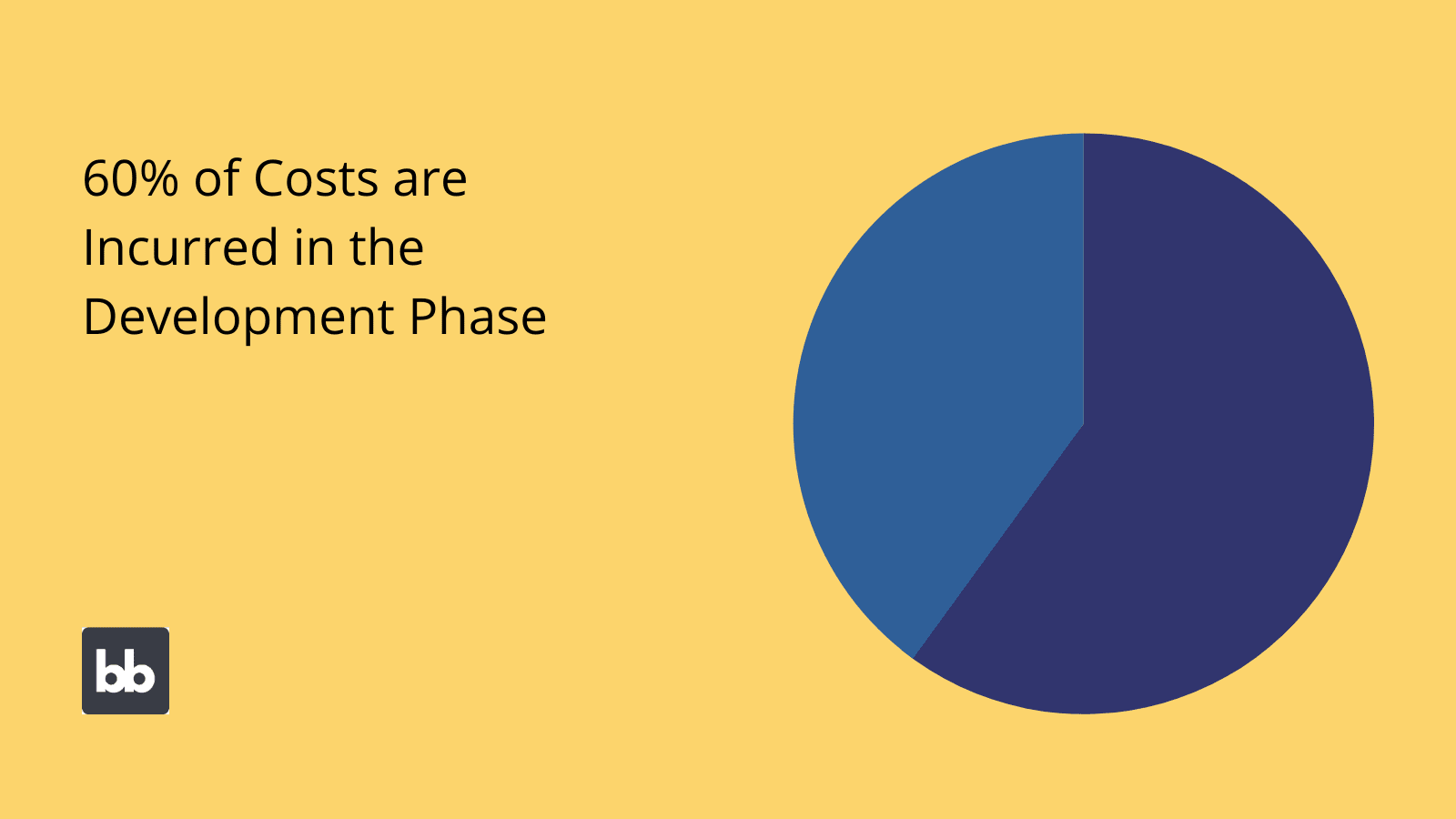
(Velvetech )
Check out our guide to enterprise software industry trends for more information.
5. Testing
Testing is a crucial component of every development project, but this fact is amplified for enterprises. The more widely adopted any given tool is, the greater the impact any bugs, oversights, or inefficiencies will have.
So, testing needs to be appropriately robust to reflect this reality.
One challenge here, as ever, is resourcing. We need both the workforce and the right software stack to test our products. Naturally, this gets more difficult as a function of the complexity of your application.
That’s just functional testing.
Another common pain point is verifying that your tools are actually efficient, usable, and appropriate for your core business problem. For this, we need end-user testing.
As the name suggests, this involves tasking the kinds of employees who’ll eventually use your platform with trying it out and providing feedback. You might opt for a closed questionnaire or more open-ended discussions to determine the suitability of your solution.
The goal is to figure out any potential changes or improvements you can make before deployment.
6. Deployment
Finally, it’s time to bring our enterprise app development project live. As we know, the details here are highly dependent on internal policies and procedures. So, typically IT teams will be constrained by the hosting and deployment tools that are approved to be used internally.
Besides this, we need to be cognizant of the extent to which things can go wrong during deployment.
For instance, we might encounter issues with our code base in the live environment that hadn’t previously been identified. So, we need additional testing and monitoring measures in place.
Once a solution has been pushed live, our focus shifts toward maintenance. Enterprise IT teams actually spend a large proportion of their time on maintaining existing solutions, rather than creating new ones.
For instance, patch management, application updates, and bug fixes.
So, if we truly want to alleviate development backlogs, one of the first things we should focus our attention on is building solutions that are easily worked on. We’ll see how your choice of development platforms influences this a little later.
How much does enterprise app development cost?
Unfortunately, there’s no straightforward answer here. Different sources place the typical simple enterprise app build in the region of $20,000, with more complex solutions moving well into the hundreds of thousands, and even millions.
This is a pretty vague range, but that’s the nature of the beast. Individual organizations invest different amounts in their IT teams, so even internal labor costs can vary wildly.
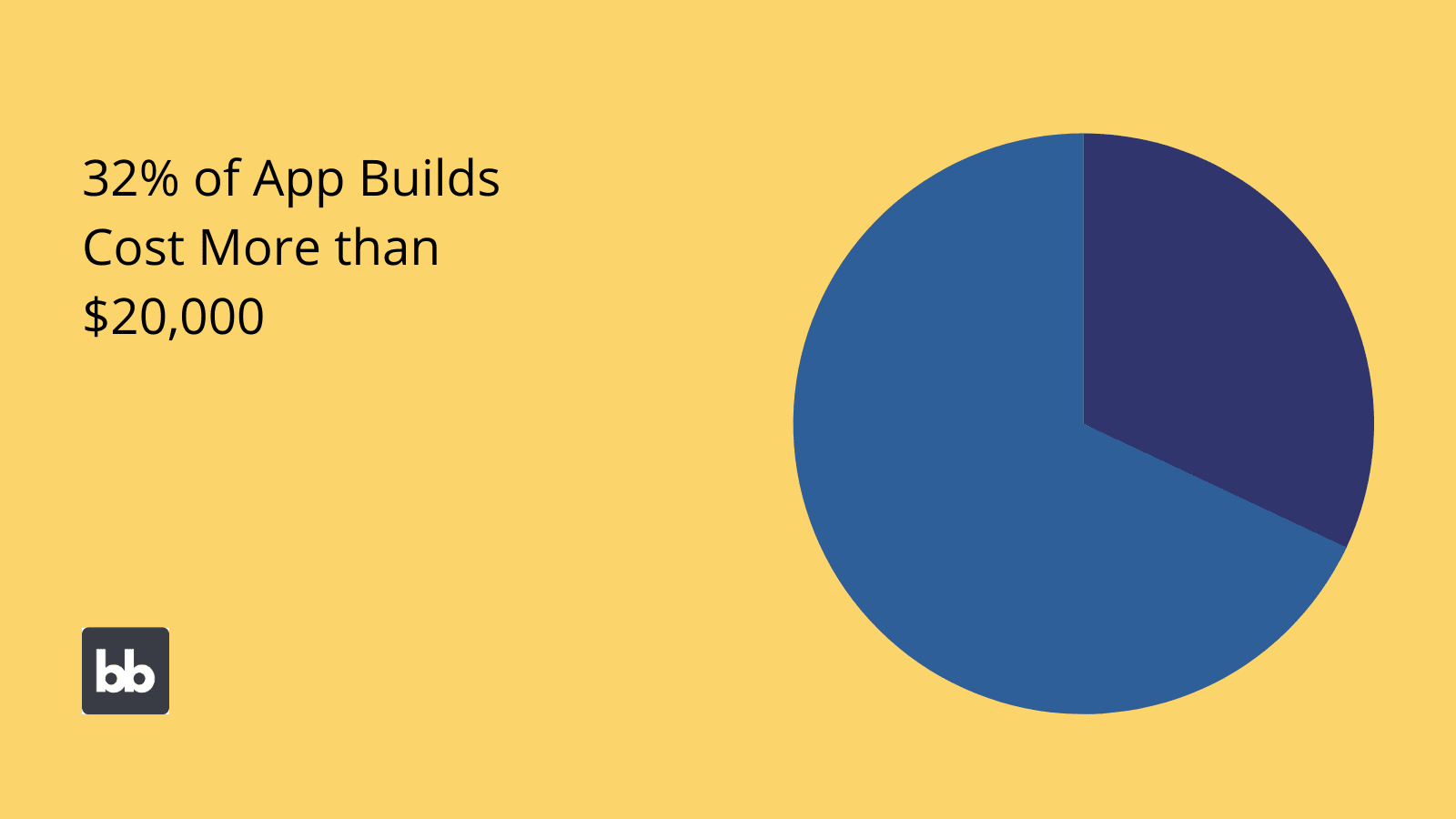
But let’s step back for a second.
We know already that most enterprise app development projects are relatively simple tools. It’s a bit harder to align this fact with the typical costs we mentioned a second ago.
Therefore, it follows quite naturally that enterprises aren’t making the best use of their IT teams’ time.
To understand this disparity, we need to consider the tools that enterprises use to build applications.
Enterprise app development platforms
As we’ve hinted at a few times now, choosing appropriate development tools is central to the success and profitability of any project. As such, we need to check out the landscape to better understand how enterprises develop applications.
Let’s take a look at the different classes of tools that are most often used by enterprises.
Traditional development tools
Obviously, one of the most common approaches is to build your projects around traditional development tools and hard code.
Really, we can think of this as being the norm.
And the benefits are pretty self-explanatory here. This is what most professional developers are used to doing day and daily. There are a couple of extra caveats in an enterprise context, like providing approved IDEs and building in appropriate code review processes.
Still, there really isn’t much limit on what can be achieved with hard-corded solutions.
The downsides of traditional developments are somewhat underexamined though. The killer here is that coding everything from scratch isn’t generally a good use of your developers’ time - especially for simple, repetitive projects.
There are plenty of ways to get around this problem, even within the traditional development umbrella. For instance, leveraging existing libraries, reusable components, and other resources to expedite builds.
Even armed with these, IT departments struggle to keep up with the demand for new applications.
So what are the alternatives?
Proprietary app builders
One alternative is turning to what we might call proprietary app builders. These are platforms created by major blue-chip players to allow businesses to build tools around the fringes of their existing ecosystems.
For example, Microsoft Power Apps, Google Apps Script, IBM Watson Explorer, or Salesforce App Builder.
These platforms share a recognition that an inordinate amount of time and money is wasted building simple applications. Their goal is to provide a streamlined, faster experience for outputting solutions.
But, there are a few key areas where proprietary tools fall short.
One is that vendors have an incentive to encourage users into ever-increasing reliance on their ecosystem.
So, it’s normal to encounter situations where you’d need to switch an existing tool to the vendor’s own equivalent solution in order to achieve a particular functionality.
The other key issue is that most of these tools aren’t the top priority of their vendors and can often be fairly dated. Because of this, proprietary tools are sometimes dubbed grey battleships, after their drab, unintuitive UIs and poor developer experiences.
In many cases, they can actually require additional specialization in terms of your IT team’s skill set. So, individual developers might need to upskill to use specific platforms. Obviously, this isn’t ideal.
A growing number of enterprises are seeking out better alternatives.
Low-code platforms
Low-code is fast changing the world of enterprise app development. In the past few years, several tools have come to the fore with the explicit aim of providing enterprise IT teams with a better, faster way to create the tools they need.
The appeal of low-code development is simple.
As an ever-greater number of business processes need to be digitalized, internal developers need the power to bring working solutions online, quickly. Eliminating repetitive tasks and manual interventions is the best way to achieve this.
Low-code is revolutionizing the way enterprises build apps.
Let’s take a look at how Budibase is leading the charge.
Budibase for enterprise app development
We’re on a mission to build the world’s largest ecosystem of business apps. Countless enterprises around the world choose Budibase for fast, cost-effective app development projects.
We’re biased, but we think Budibase is the smart choice for building custom internal tools.
Let’s take a look at what makes our platform a developer’s best friend.
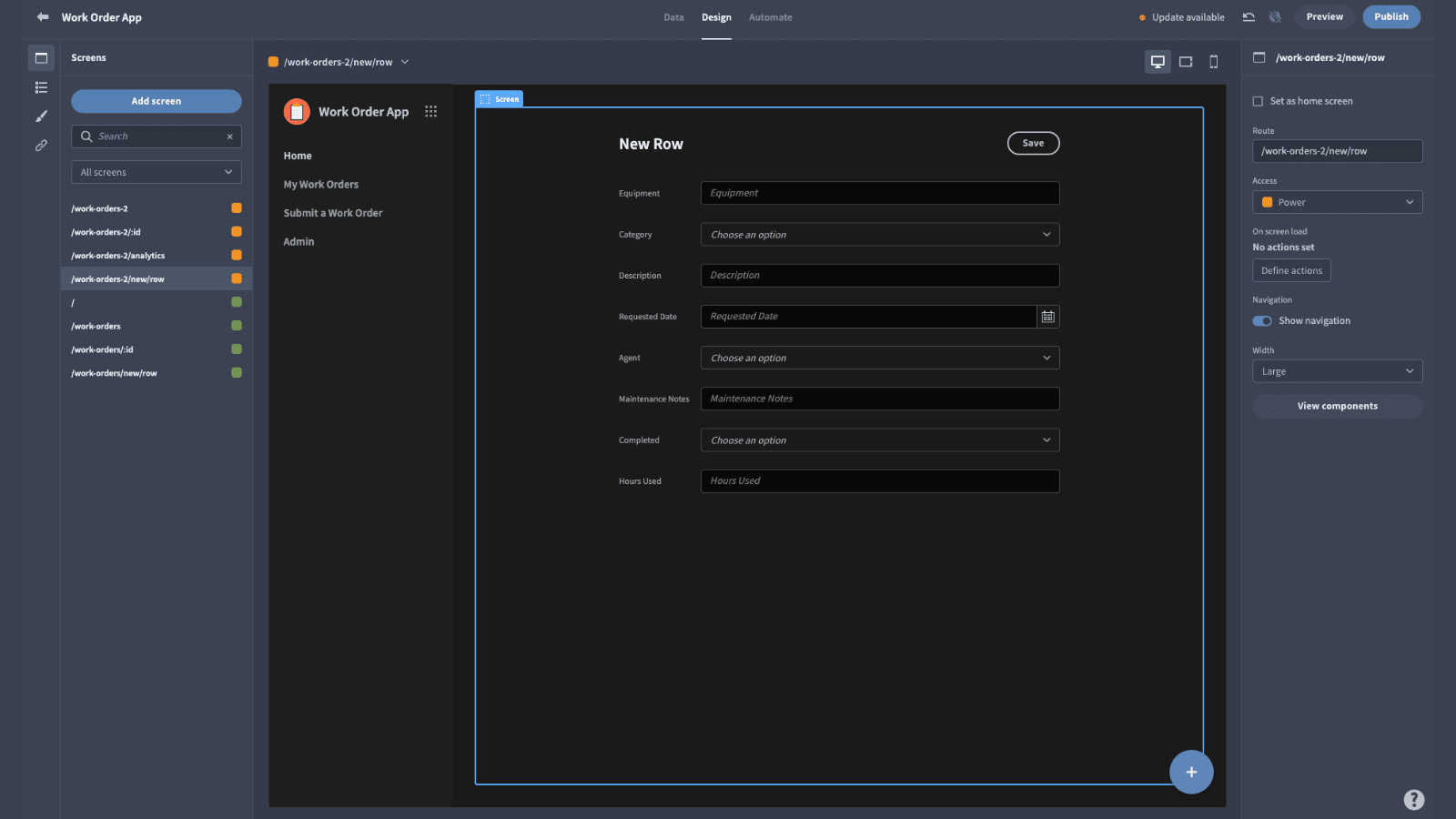
Simplicity by default
Budibase is built on the idea that building apps doesn’t need to be hard. Choose our open-source, low-code platform to build working solutions in minutes, not months. With autogenerated screens and an intuitive design interface, building apps has never been faster.
Check out our product page for more information.
Unparalleled data support
No other platform makes it so easy to build tools around existing data sources. We offer full support and dedicated connectors for SQL, Postgres, Oracle, Mongo, Couch, REST, S3, Airtable, Google Sheets, and more.
You can even autogenerate fully-functioning CRUD apps with connected data.
Or, you might opt to use our internal database, BudibaseDB, with full support for CSV uploads.
Optional self-hosting
Budibase is the smart choice for enterprises that want to deploy to their own infrastructure. We offer optional self-hosting with Kubernetes, Docker, Digital Ocean, and more. Build apps and deploy them locally or to your existing cloud infrastructure, with ease.
We also offer our own cloud-based hosting platform, to get you up and running quickly.
Check out our hosting docs to find out more about self-hosting Budibase.
Customizable RBAC
Optimize your apps for security and usability with Budibase’s customizable role-based access control . RBAC is the accepted best practice for giving users the exact right level of access to meet their daily needs.
With Budibase, it’s incredibly easy to administer user roles and grant permissions at the level of datasets, queries, screens, and components.
Automate tasks
Choose Budibase to automate all sorts of tasks, without excessive custom code. We offer a comprehensive set of nestable automation actions, that can be triggered by system events, user actions, database queries, and more.
Integrate Budibase with your existing tools, and build automations around external actions, with REST, Zapier, Webhooks, and more.
Check out our article on how to automate tasks to find out more.
Build your own plug-ins
Budibase is simple by default, but it’s extensible when it needs to be. Use our CLI to create your own custom plug-ins and data sources, to use across all of your enterprise app development projects.
Check out our plug-ins documentation to find out more.
Sign up for Budibase for free to start building applications the smart way, today.